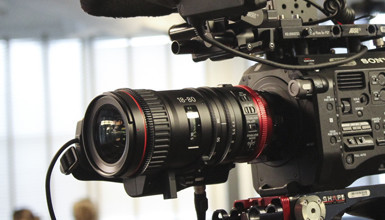Canon Cine-Servo 17-120mm
| Zoom Factor | MSRP Price | Weight | Lens Mount | T* | Focus Rotation | Iris Blades | Front Diameter | Minimum Focus |
| 7x | $26,350 | 6.4 lbs w/o servo | Canon EF / PL | T2.95 -T3.9 | 180° | 11 | 114mm | 2.8′ / macro |
BUILD AND FUNCTIONALITY
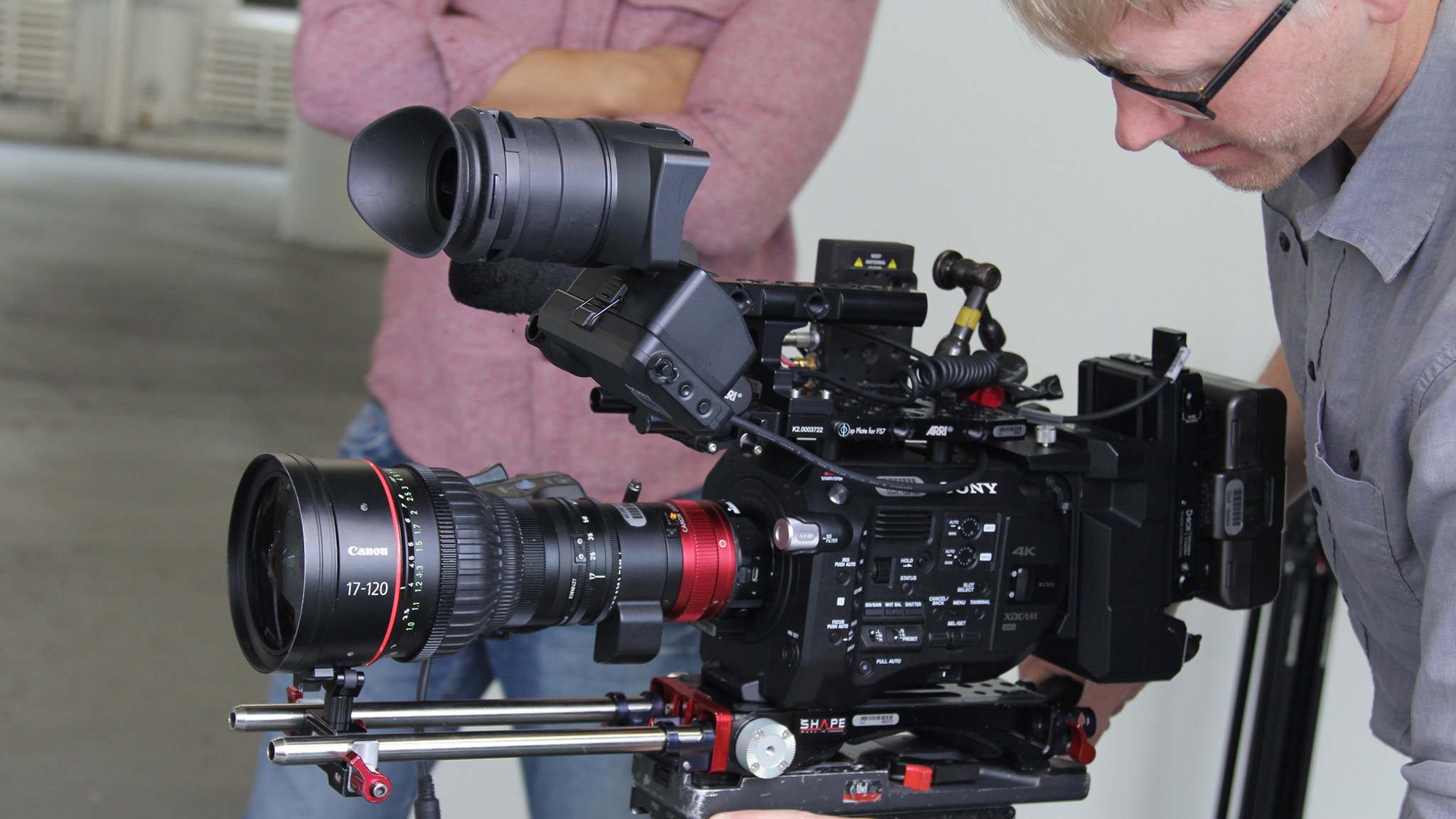
The Canon 17-120 is built in the traditional style of ENG lenses from the ⅔” sensor world. Unlike traditional cinema lenses, the 17-120 has a flared design, starting slim from the lens mount through the zoom ring, and then bulbing out at the focus barrel. This design makes handholding the lens much easier. You have a wide surface area in which to carry the weight of the camera and lens, as well as having an obvious place to find the focus barrel.
While the focus barrel is large, it has, in my opinion, the perfect amount of rotation at 180°. Unlike the Canon cinema zooms that offer larger throws of 300° to fit focus pullers, the 17-120 gives a smaller throw for operators who are pulling their own focus. This offers a great balance of fine tuned focus with easy long focus racks.
The focus ring is geared with the standard cine 0.8 gear pitch to work with follow focus systems. The zoom and iris rings, on the other hand, are geared with the smaller Canon pitch that interfaces with the servo motor. While you can get motor gears in this pitch size, the designers assumed the shooter would be using these functions with the servo attached.
Despite this, the servo grip is detachable, allowing you to use this lens in a more traditional cinema build. When re-attaching the servo, a quick initialization is all you’ll need to get up and running again.
The servo grip offers a multitude of options. It has a zoom rocker that can be disengaged by switching the motor into manual mode. It has start/stop (with an additional cable for power and camera interface), as well as auto iris and ports for plugging in external zoom and focus controls with the Canon 20-pin connector. The servo is a fully digital system, so you can program the zoom speed from anywhere between a ½ second snap zoom all the way to a slow 300-second creep. This offers a lot of flexibility in how you use the zoom servo.
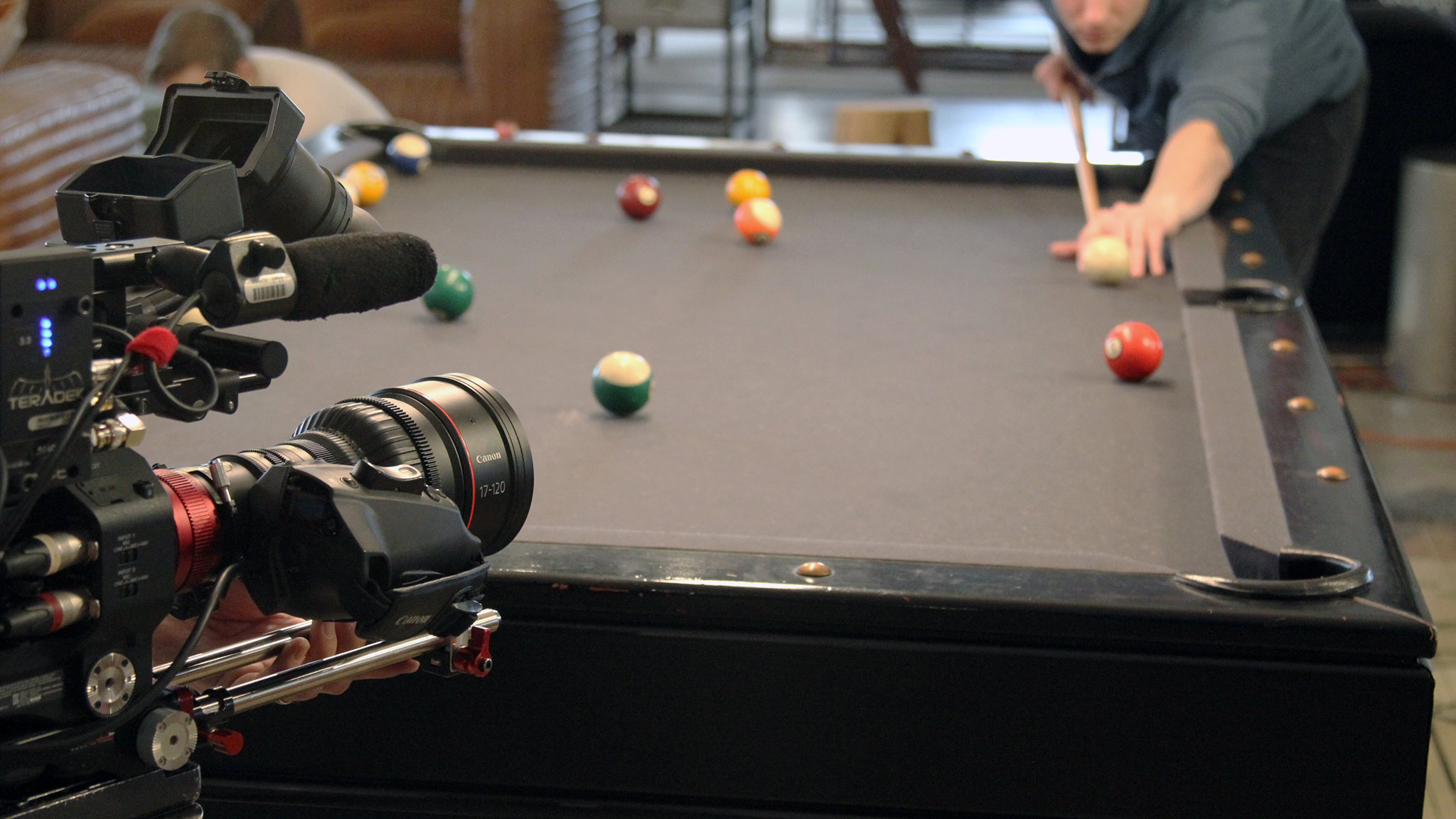
The lens is heavy. With the servo unit attached, it comes in at 6.4 lbs, the heaviest of the lenses in the series (tied with the Cabrio 20-120). Because most of the weight is at the large front element, I have found that with the servo motor disengaged the lens will actually zoom in or out when tilted at an extreme angle. This is worrisome and something to be aware of for sure.
With the weight, this lens is mainly designed to be on a shoulder-mounted camera. Despite adding some wear and tear to your shoulder, I find I can get incredibly stable shots when shooting with this lens. I choose my projects wisely when using this lens, but it gives stunning results.
The lens has a variable aperture, of T2.95 to T3.9. It has a constant T2.95 aperture from 17mm to 91mm, and then drops to T3.9 from 92mm to 120mm.
The lens has a 114mm front diameter, and ships with a rubber shade. The lens can be purchased in either Canon EF or PL mounts, but with available lens mount adapters, the mounts can be user-switched in the field.
GEOMETRY
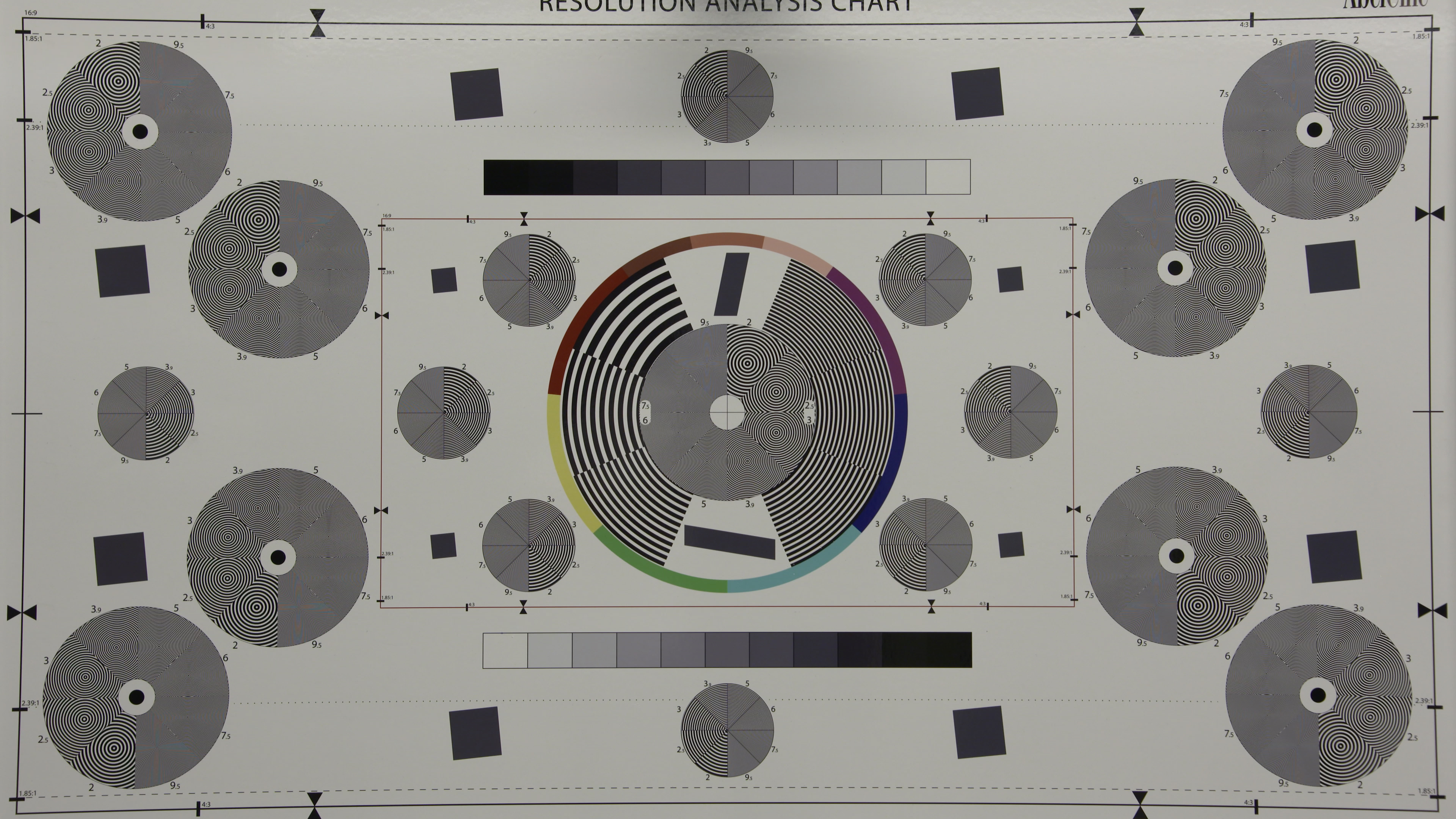
When we shot the Canon 17-120 on the resolution chart, you can see there is some obvious pincushioning to the border box of the chart. In the interview frame at 17mm, you can also see slightest amount of edge distortion. This looks to be the same amount of distortion we got with the Canon Compact Zoom 15.5-47 at the wide end.
EDGE BRIGHTNESS
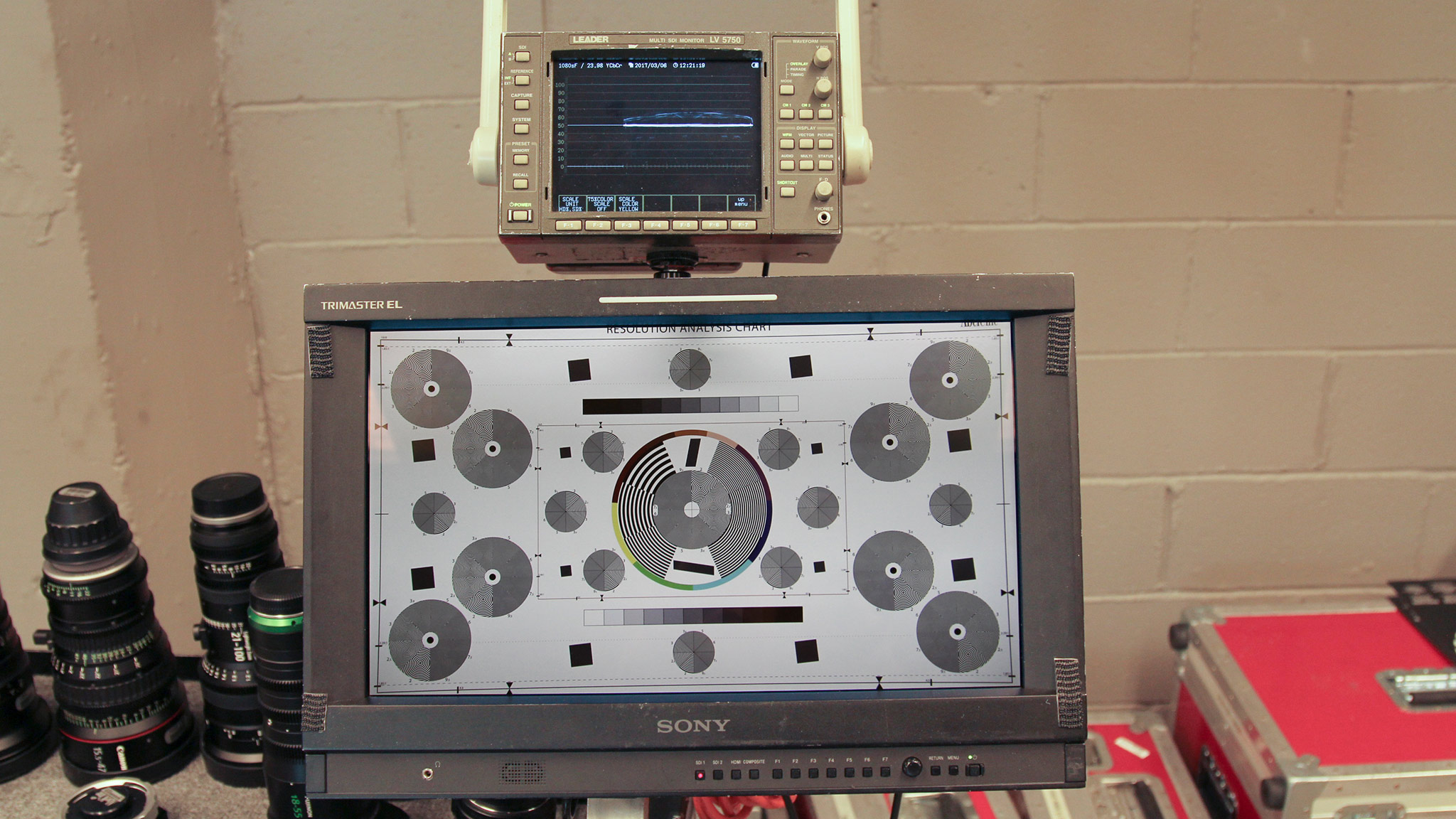
To test the edge brightness of each lens, we filmed the resolution chart at all T-stops from wide open to T11 and examined the curve of the white on a waveform monitor. There is a bit of falloff wide open, but from T4 and above, the image is even edge to edge. Download full resolution screen captures of all T-stops here.
SHARPNESS
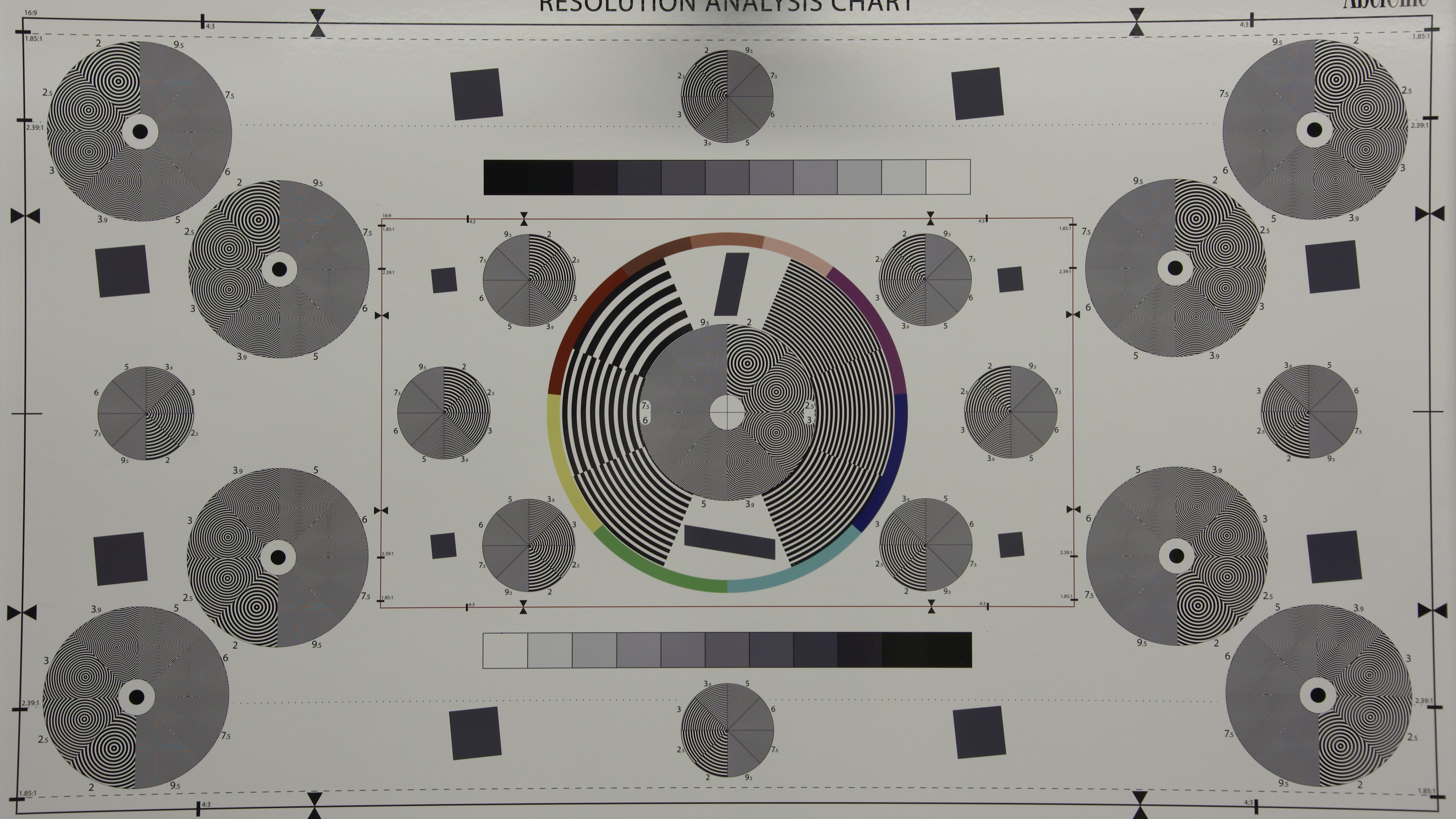
After examining the footage from the resolution chart, we found this lens to be incredibly sharp at all T-stops. Even when shooting, I found it easy to know if I was or wasn’t in focus. This is one of the sharpest lenses in the series. Download full resolution screen captures of all T-stops here.
CHROMATIC ABERRATION
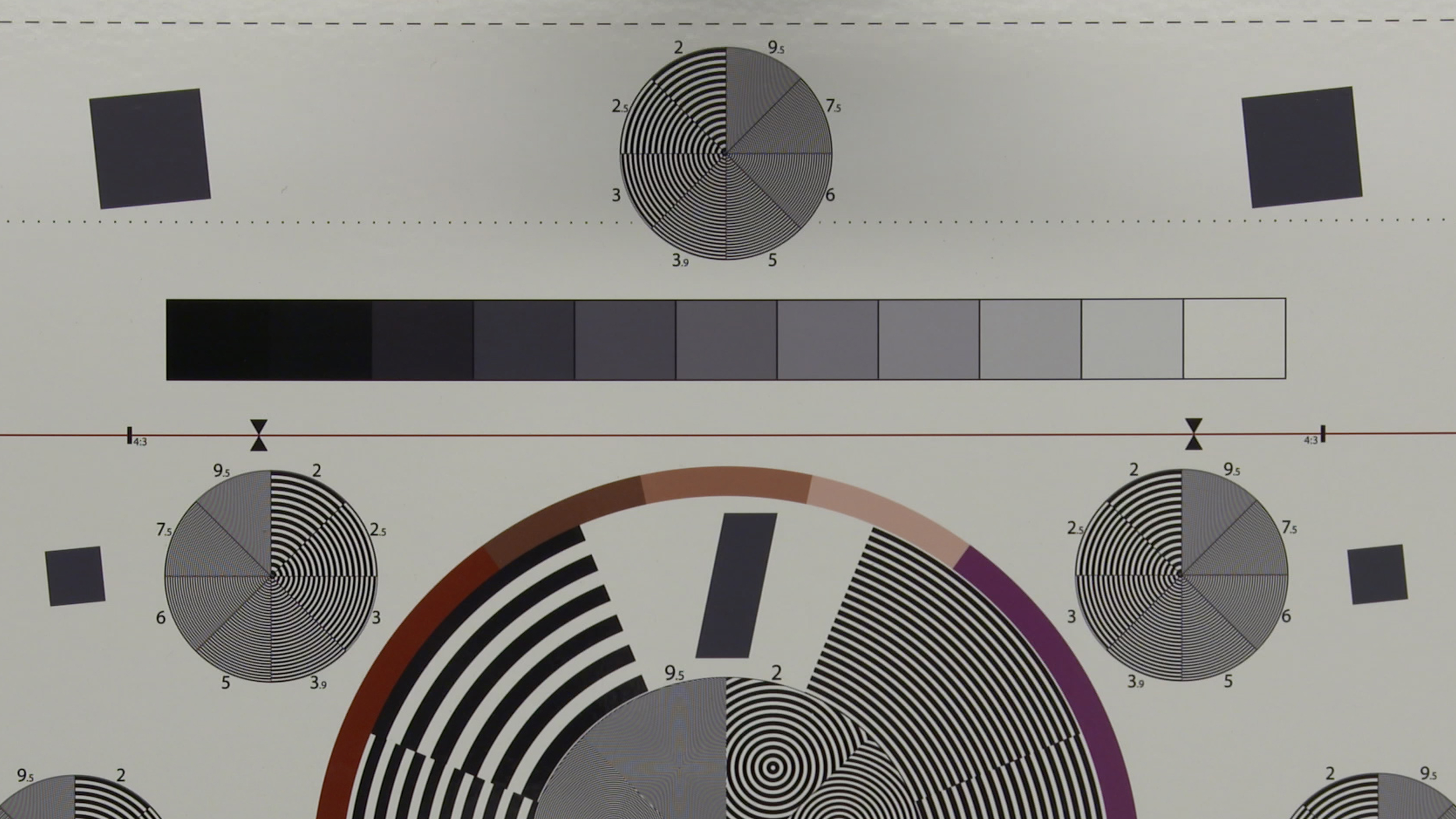
To test for chromatic aberration, we can again go to the resolution chart. The off-kilter boxes on the chart offer a slight angle to see if any color fringing occurs. With this lens, you can see the faintest hint of red fringing on the right verticals and a negligible amount of blue/green on the left vertical sides.
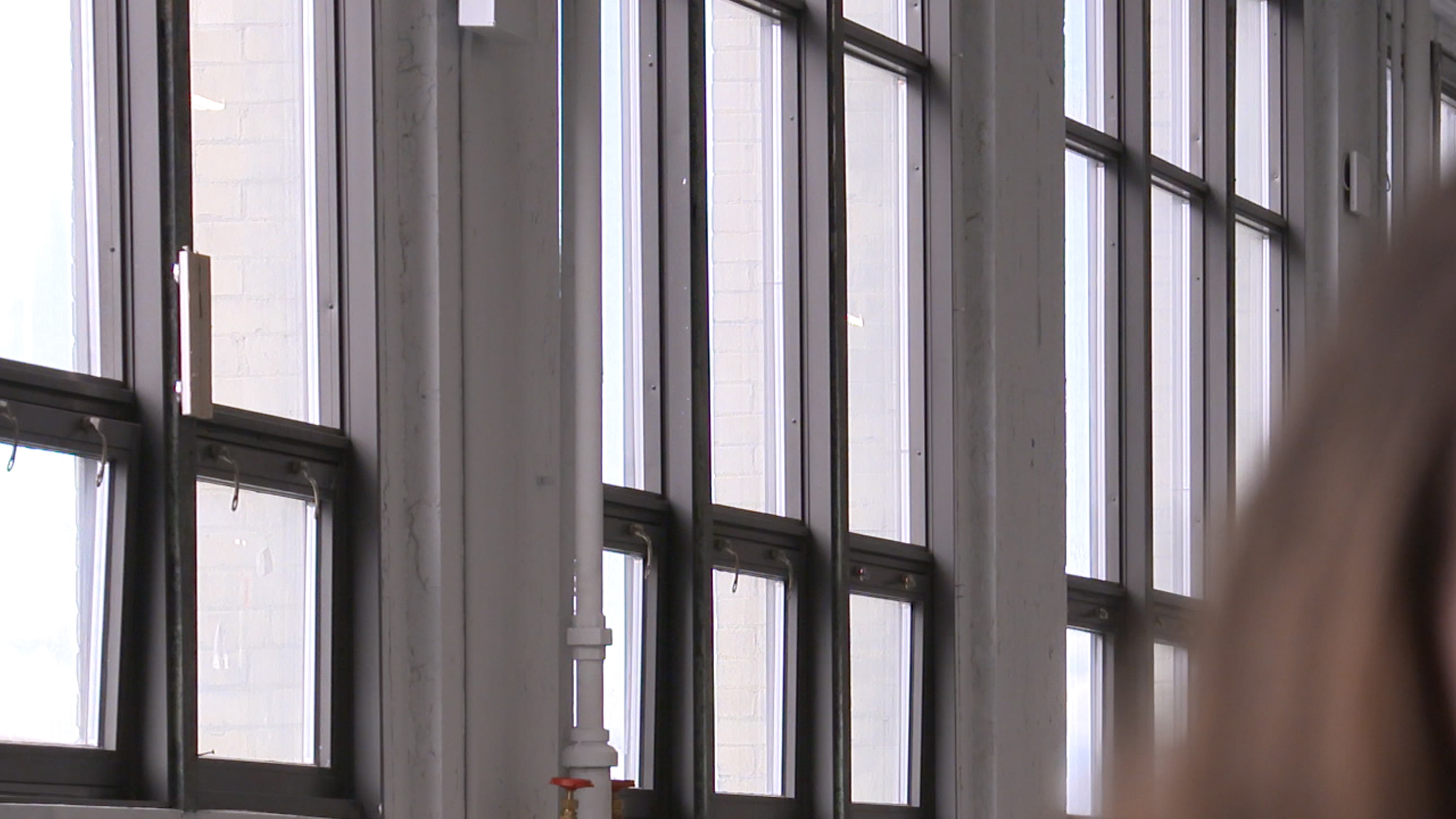
Interview frame at 300%
To better see if there is any real fringing, I enlarged the window frames in the interview frame 300% to see if this plays at all in a real scene. In only a few spots there is a hint of red and blue fringing, but I would say this lens handles incredibly well and shows no real signs of chromatic aberration.
COLOR
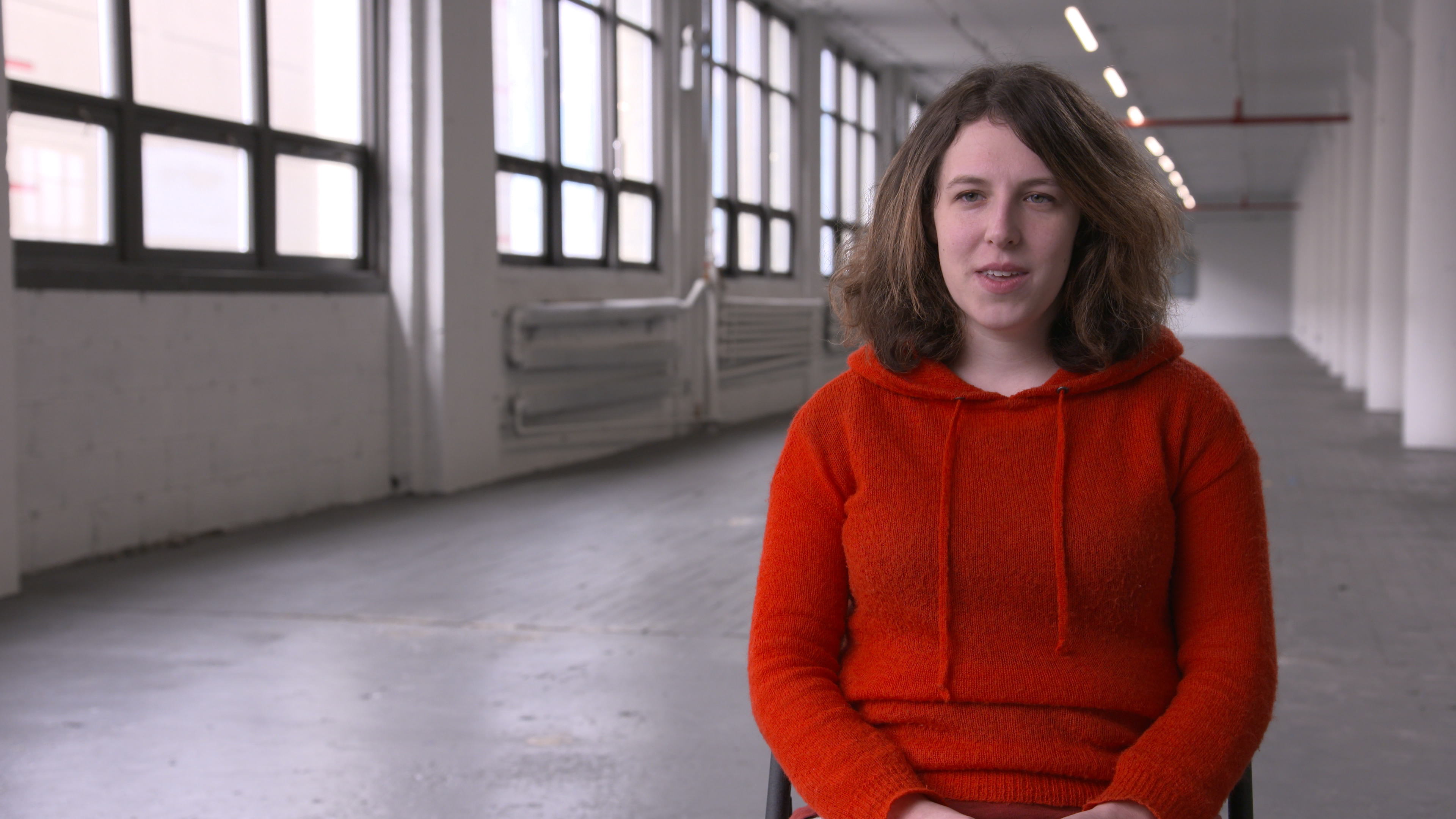
To test the color of the lens, I first white balanced the camera without a lens attached to have a baseline of pure white on the camera’s sensor. Once this white balance was taken, I mounted the lens.
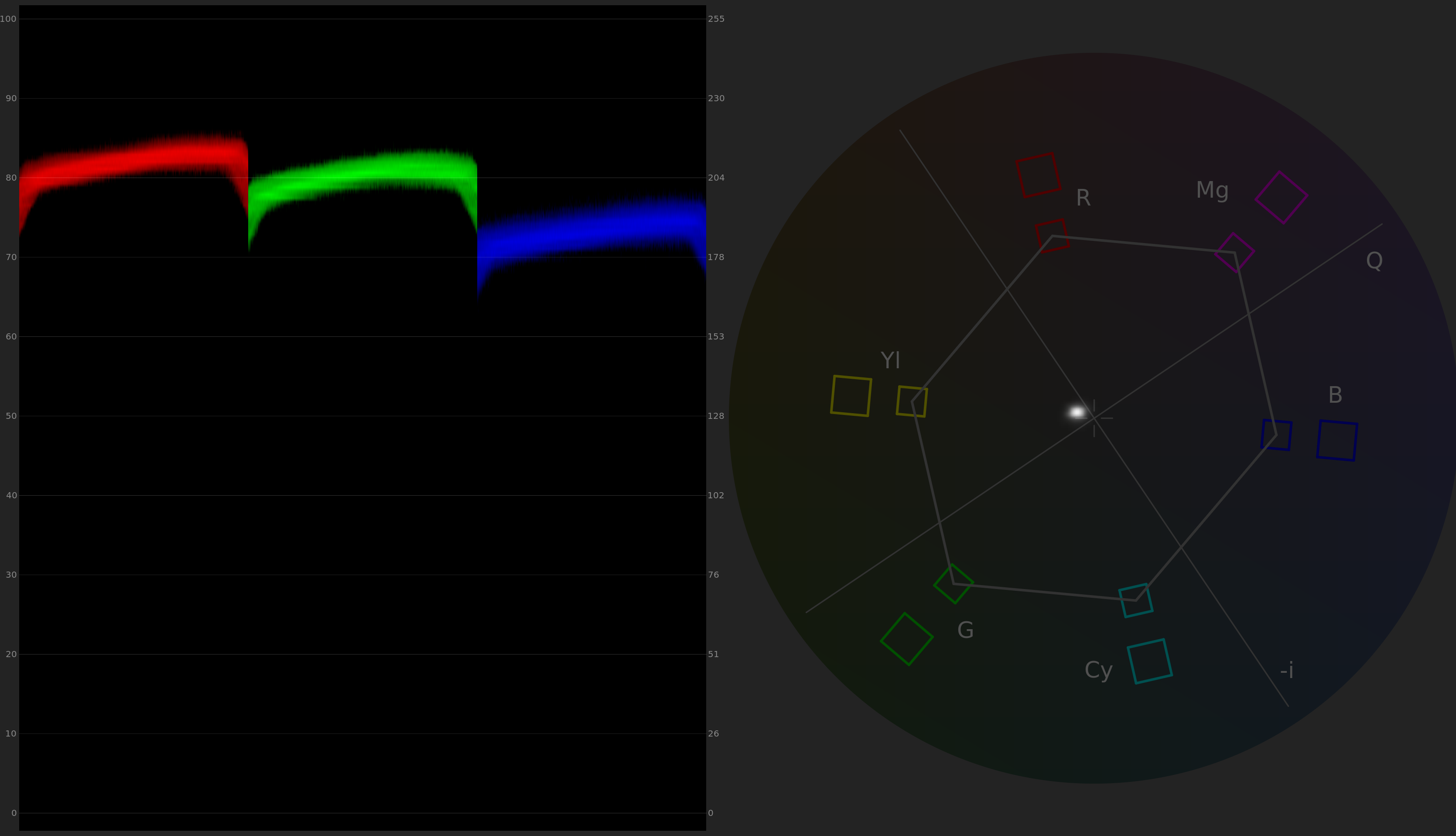
When reading the RGB waveform and vectorscope, you can see the color properties of the lens. The Canon 17-120 reads pretty warm overall. You can see the red and green channels are heightened on the RGB waveform, skewing the vectorscope towards red and yellow. You can also see on the Leader vectorscope the skewing of the color. Note: the Leader image is enlarged 5x, hence the difference in readings on the vectorscope images. This is done to emphasize the reading. You can see in the interview frame the obvious warming compared to other lenses in the test. Click to download larger, detailed examples.
BREATHING
We tested the lens for breathing in two different setups. The first is in the interview frame at both 35mm and 50mm. In both frames, there is some small, yet obvious breathing in the image.
The second test was at the pool table, at the wide and tight ends of the lens. Again, you can see the breathing at the wide end of the lens, as well as in the tight frame. While the breathing is there, I find it less distracting when placed in a scene with objects in motion.
MINIMUM FOCUS
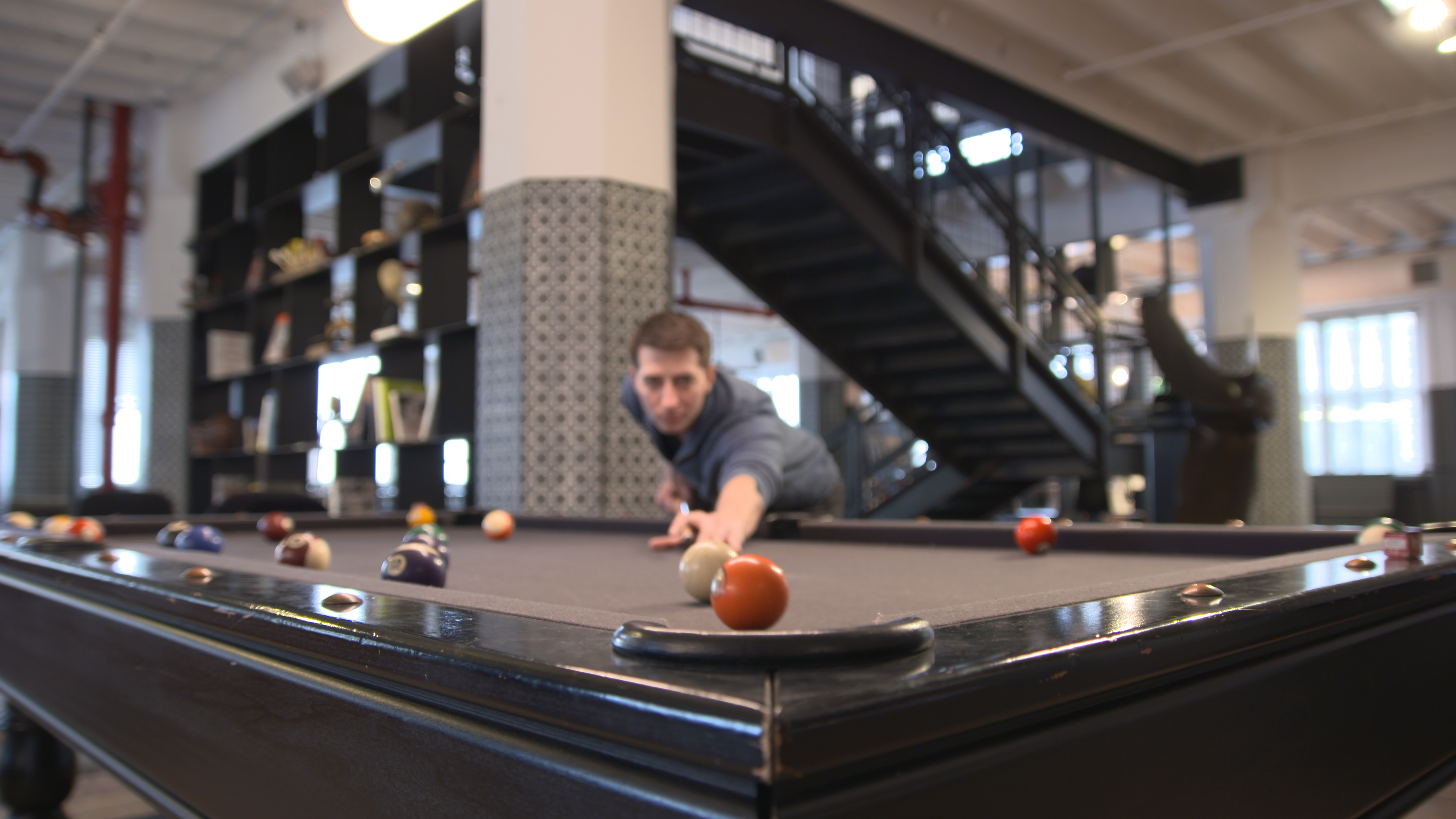
The minimum focus of the lens is 2.8’, which at 17mm gets you pretty far from an object. But this is a moot point, considering the lens also has a macro feature. This can be engaged by clicking the macro tab at the base of the lens by the lens mount. When this mode is engaged, you can get very impressive close focus shots. I found in macro, the focus distance is literally at the front element – which means to get my macro-focused pool ball shot, I actually had to move the ball slightly away from the lens so as to not damage the front element. Very impressive!
BOKEH
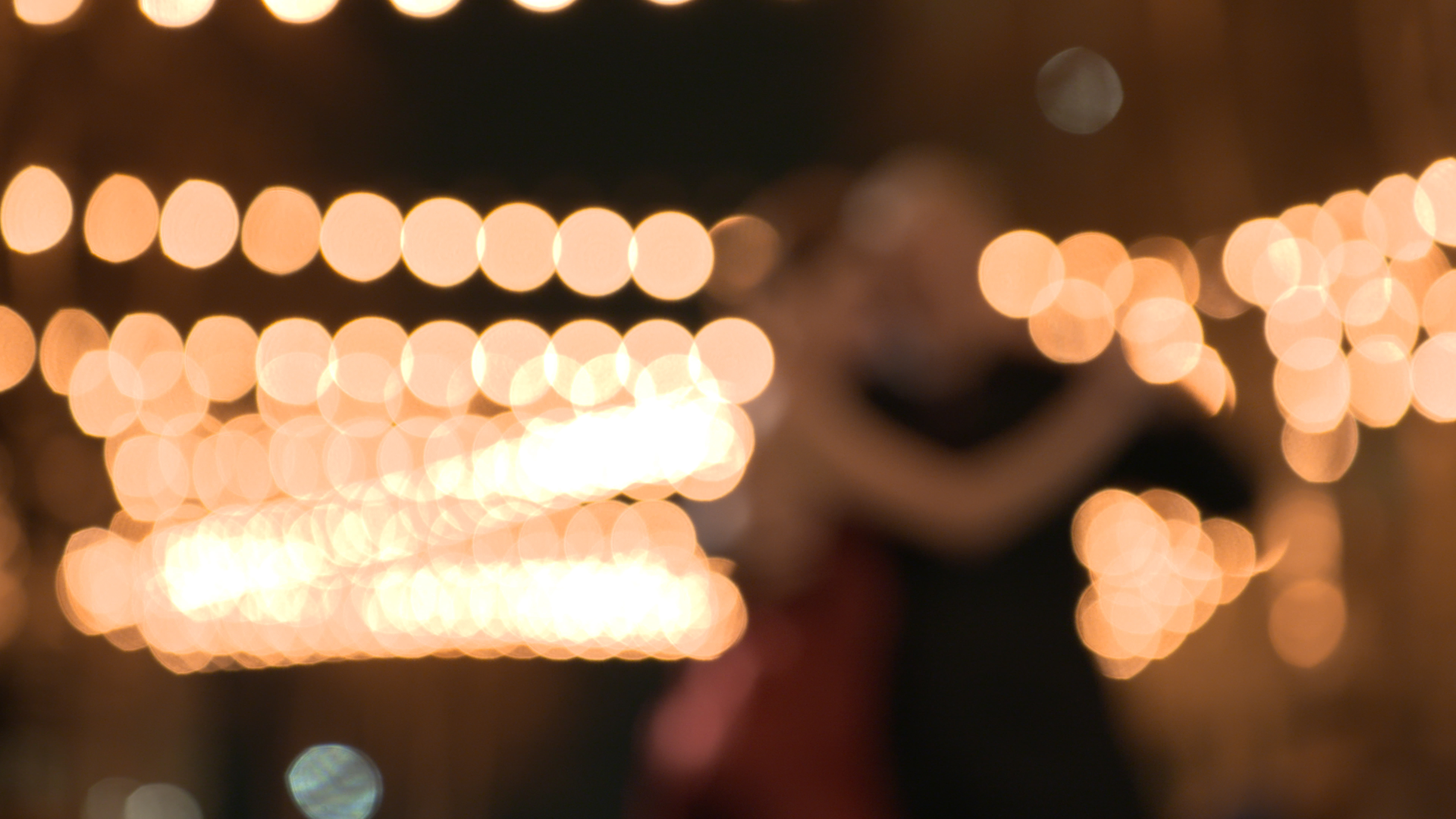
Given the fact that the lens has eleven iris blades, the Canon 17-120 renders out of focus elements beautifully – the bulbs are incredibly round and smooth. You can see in this screen grab though, like all lenses, there is some distortion that occurs towards the edge of frame. The bulbs become vertically stretched and more jagged on the outer edges. Like I mentioned before, this is an effect that is rendered in all of the lenses we tested.
LENS FLARES
The lens is pretty flare resistant overall. It’s especially flare resistant at the wide end of the lens. You can see there is a tight bright halo around the light, but the flare trail itself is tight. There are multiple conical elements to the flare, but they are relatively small. Overall, the flare is cooler in color. At the tight end of the lens, the flare characteristics change dramatically. There is a lot more color to the flare, occurring mostly in bright, dancing light leaks throughout the flare path. There are purples, blues and greens that dance throughout the frame. I find the flare at the tight end of the lens to be beautiful and interesting.
CONCLUSION
The Canon Cine-Servo 17-120 is an impressive lens for documentary production. The zoom range is hands down the best of the lot and the image quality is top notch. While the lens is heavy, it is well built and gives you incredibly smooth shots. I tend to choose this lens on projects where I am not needing to keep the camera on my shoulder for fifteen straight hours, so it becomes a perfect choice for high-end productions mixing interviews and light verite work that will end up projected or for wide release.
The servo grip gives this lens added functionality. Not only does it make handholding the weight considerably easier, but also allows for full zoom control and start/stop from the grip. It’s also great for shooting interviews when pairing with Canon’s Zoom and Focus Demands. The large front barrel and 180° focus rotation make it a comfortable lens to hold while offering precise, yet achievable long focus racks in a single move. The macro setting allows for incredibly close shots, expanding the types of images you can get. The lens is incredibly sharp and has a pleasing warmth to the image. The lens is flare resistant, while still giving a beautiful overlay to the tight shots.
I hope you found this lens test useful, and be sure to check out the other lenses in the Behind the Lens – A Look at Documentary Zooms series.


















